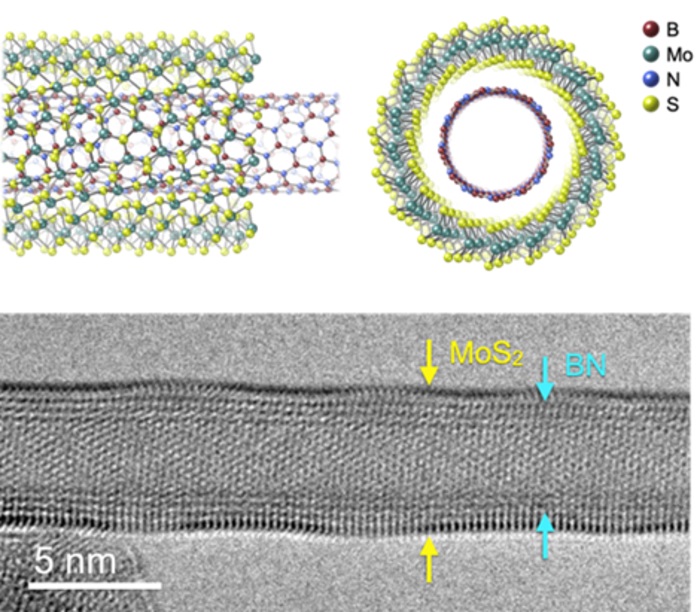Breakthroughs in nanotechnology have made nanotubes and nanosheets easier to come by for materials scientists. But studying them in isolation is far from easy. Because they often come bundled or aggregated, it’s tricky to target the exotic optical and electronic properties that come from their reduced dimensionality.
Recent work showed that nanotube materials could be grown on the surface of a carbon nanotube, providing well-separated structures that could potentially be characterized. But carbon nanotubes have conducting properties and strongly absorb light, making it difficult to tell apart the electrical and optical properties of the coated material from those of the original nanotube.
Now, a team led by Assistant Professor Yusuke Nakanishi, Assistant Professor Yohei Yomogida, and Associate Professor Yasumitsu Miyata from Tokyo Metropolitan University has used insulating boron nitride (BN) nanotubes instead as templates for growing nanotubes. This is no mean task: boron nitride nanotubes are notoriously sticky. Though they can be dispersed with a surfactant which helps keeps the tubes apart, it was not clear whether the surfactant could be removed to reveal a clean template. Now, the team has successfully found a surfactant which does not stick to the tubes; they also honed a heat treatment under vacuum which leaves clean, well-isolated insulating nanotube templates.

Chemical vapor deposition of molybdenum disulfide on a well-isolated boron nitride nanotube creates a coaxial nanotube structure.
Using chemical vapor deposition, a range of materials could be coated onto the templates. The new tube wraps around the original BN tubes, forming something that looks like a nanoscale coaxial cable. Importantly, since BN is an insulating material, the electrical properties of any materials coated can be studied in unprecedented depth. This includes a property known as chirality, the “handedness” in the structure of the atoms in the nanotube which gives rise to a whole range of exotic electronic properties.
In principle, the team believes that their “nano-test-tubes” can be used to template the growth of a whole range of different materials. They’ve already succeeded with molybdenum disulfide and carbon, with scope for many more. Add to this the optical and electrical inertness of their BN template, and their new platform promises not only material discovery, but also unfettered access to their exotic physicochemical properties.
Read the original article on Eurekalert.
